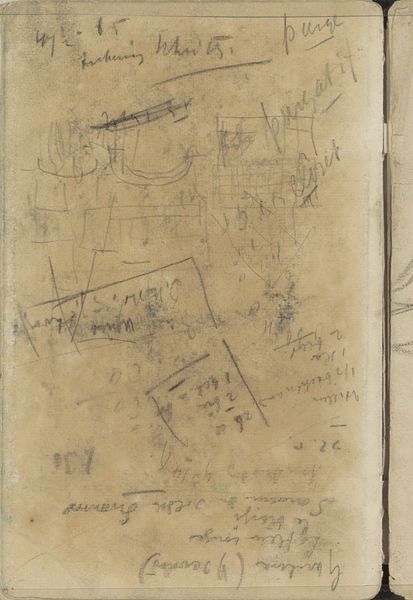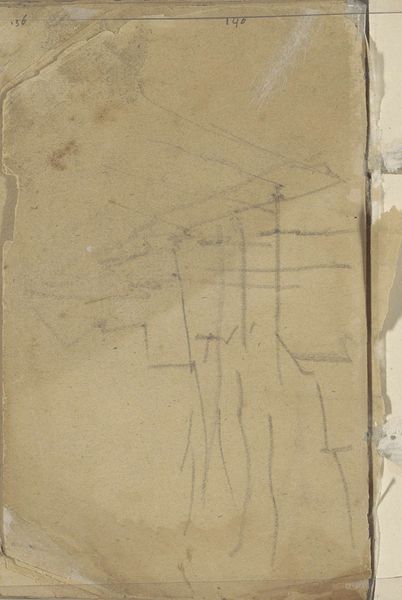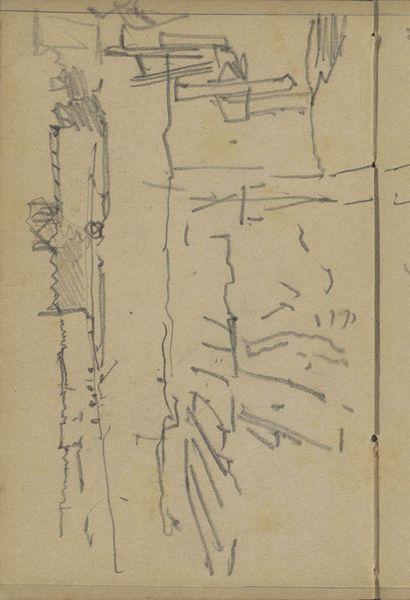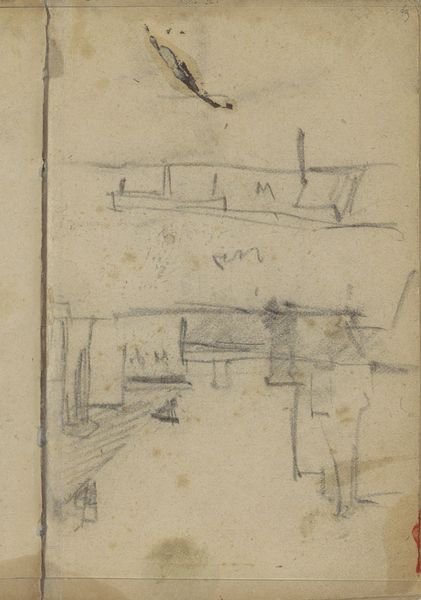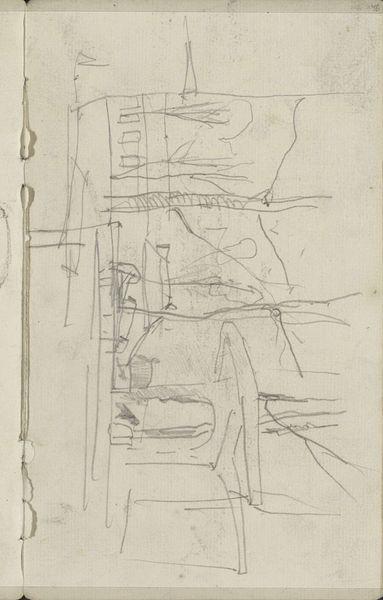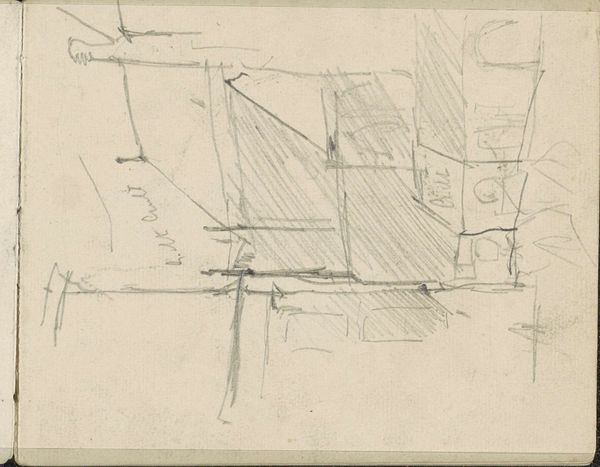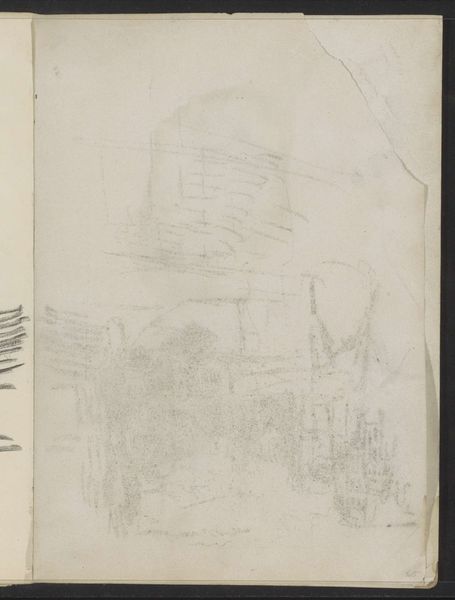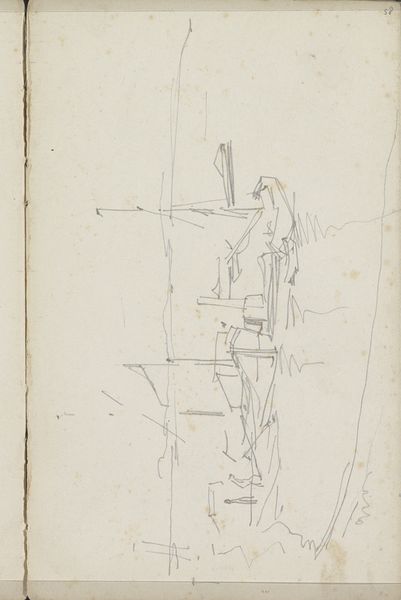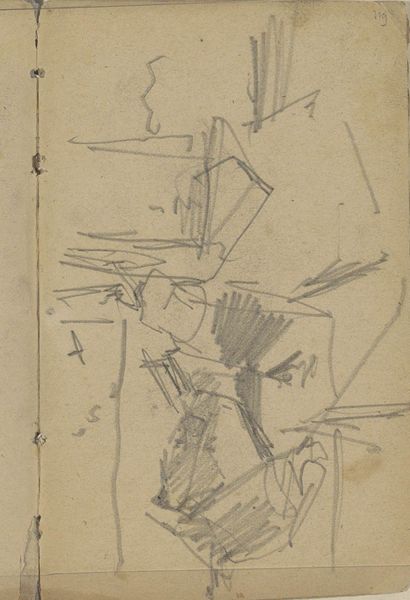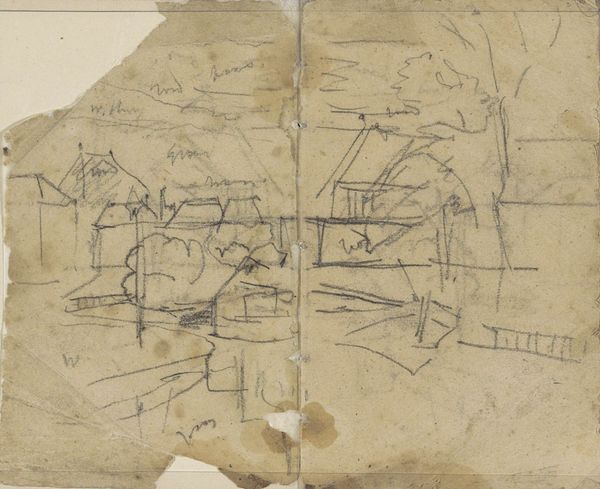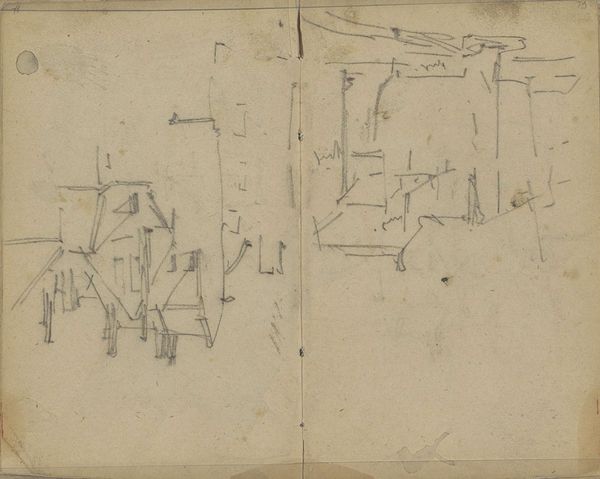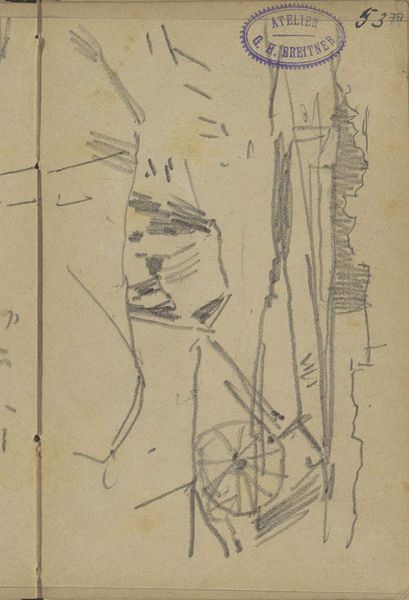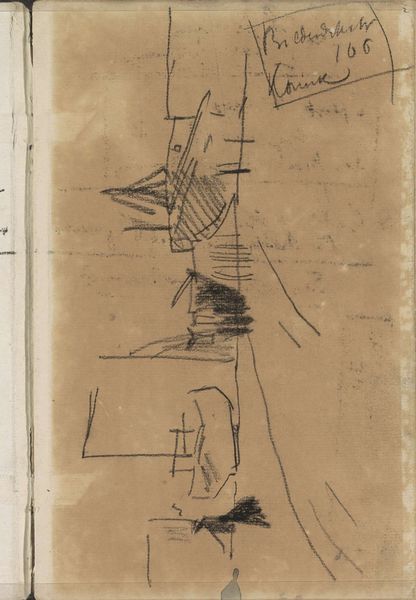
drawing, paper, pencil
#
drawing
#
impressionism
#
sketch book
#
landscape
#
paper
#
pencil
#
line
#
sketchbook drawing
#
cityscape
Copyright: Rijks Museum: Open Domain
Curator: Here we have "Huizen," or "Houses," a pencil drawing on paper created by George Hendrik Breitner sometime between 1881 and 1883. It's currently held here at the Rijksmuseum. Editor: My initial impression is one of starkness. The composition is skeletal, almost architectural, in its reduction to pure line. There's an undercurrent of melancholy, a sparseness that feels very… Dutch. Curator: Breitner was deeply engaged with the city of Amsterdam, documenting its evolving landscape and the lives of its inhabitants. This sketch is likely one of many preparatory drawings for his larger paintings of urban scenes. It allows us a glimpse into his working process, the raw material that informed his more finished works. The rise of Amsterdam saw widespread development which forced the lower classes into certain quarters. Breitner really tried to capture it all with his paintings. Editor: Structurally, I'm fascinated by how little detail is offered, and yet the forms are clearly legible. The artist uses just enough information to create a sense of depth and spatial relationships. The lines themselves are expressive, varying in weight and density, suggesting a quick, almost impulsive execution. It’s almost an unfinished narrative. What statements could this drawing evoke about modernism? Curator: That's precisely where its power lies. These drawings became an important part of Breitner's oeuvre that can function to capture the modern feeling, or even modern ennui, even more readily than painting can. The artist captured these moments while modern society, the factories and all that comes with it, were starting to take over. I suspect that he tried to illustrate its raw construction through the application of lines. It is more of a representation of modernity than melancholy, in my opinion. Editor: Perhaps it is a bit of both. His lines feel both decisive and ephemeral. The unadorned quality lends it authenticity in capturing modernity in a sketch book. It leaves us much room to wonder and interpret the work without imposing too much detail, which adds to its power and purpose in Breitner's wider artistic agenda. Curator: True, it allows us to see the world through Breitner's eyes, to appreciate the process by which an artist transforms observation into art. And from a socio-historical perspective, this glimpse into Breitner’s preliminary work speaks volumes about his methods and ultimately of a city during the late nineteenth century in transition. Editor: And, ultimately, reveals something intimate about the relationship between seeing, feeling, and the act of creation itself.
Comments
No comments
Be the first to comment and join the conversation on the ultimate creative platform.

